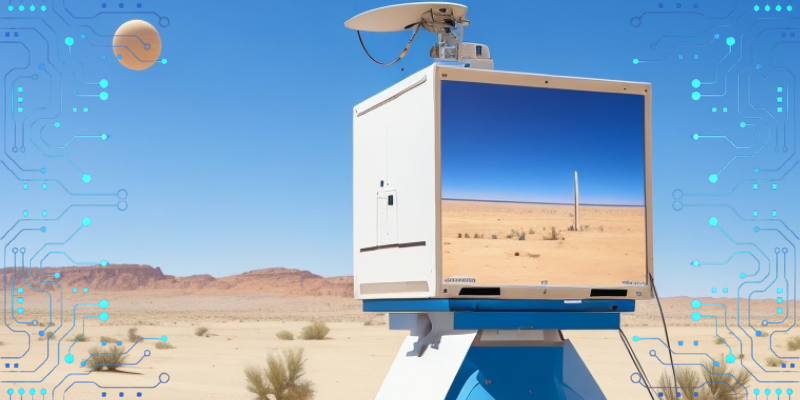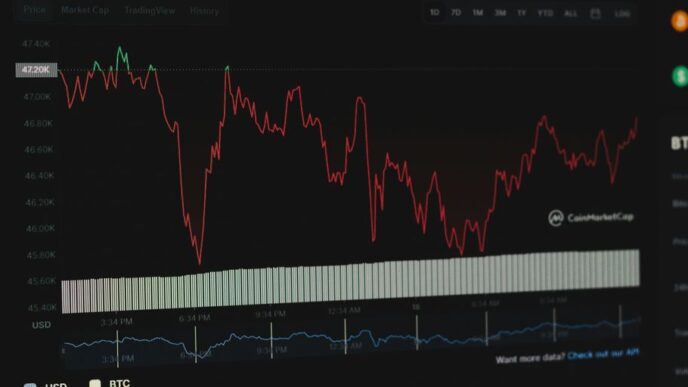In today’s fast-paced world, where every millisecond counts, businesses are constantly looking for ways to improve their operations and performance. Two technologies that have been making waves in recent years are edge computing and artificial intelligence (AI). While both have unique benefits on their own, the true magic happens when they are combined. This synergy between edge computing and AI has the potential to revolutionise the way we live and work. In this blog post, we’ll dive deeper into this powerful duo and explore how it can transform industries ranging from healthcare to manufacturing.
Introduction
The potential for artificial intelligence (AI) is vast and its impact is already being felt across a wide range of industries. However, in order to truly unlock the power of AI, we need to be able to process data faster and closer to where it’s being generated. This is where edge computing comes in.
Edge computing is a distributed computing paradigm that brings computation and data storage closer to the location where it is needed, typically at or near the edge of a network. By moving data processing and analysis closer to the source, we can reduce latency and improve responsiveness.
The synergy between edge computing and AI is evident in the way they can complement each other. Edge computing can provide the low-latency environment that AI needs in order to function effectively, while AI can help us make better use of the data generated at the edge.
Together, edge computing and AI can help us build a more responsive and intelligent world.
What is Edge Computing?
The term “edge computing” generally refers to the practice of processing data closer to where it is generated, rather than in a central location. This can be done for a number of reasons, but often it is done in order to reduce latency or to take advantage of local resources.
In recent years, edge computing has become increasingly important as the internet of things (IoT) has begun to grow. The IoT is made up of a large number of devices that are connected to the internet and which generate data. This data is often processed at the edge, in order to make decisions quickly and locally.
Edge computing is also becoming increasingly important for artificial intelligence (AI). AI applications often require large amounts of data in order to train and operate effectively. However, this data is often not available in a central location. Edge computing can provide a way to process this data locally, without needing to send it back to a central location.
There are many benefits to using edge computing for AI applications. One benefit is that it can help to reduce latency. If an AI application needs to make decisions quickly, then processing the data at the edge can help to ensure that these decisions are made in real-time. Another benefit is that edge computing can help to conserve bandwidth. Sending large amounts of data back and forth between a central location and the edge can use a lot of bandwidth. By processing the data at the edge, this bandwidth usage can be reduced.
Benefits of Edge Computing
There are many benefits of edge computing when used in conjunction with artificial intelligence (AI). One benefit is that edge computing can help to improve the speed and accuracy of AI applications. This is because data can be processed closer to where it is being collected, which reduces latency and improves efficiency.
Another benefit of using edge computing with AI is that it can help to reduce the costs associated with data storage and processing. This is because data does not need to be sent to a central location for processing, which can save on bandwidth costs. Additionally, storing data locally can reduce the need for expensive cloud-based storage solutions.
Edge computing can improve the security of AI applications. This is because data can be processed and stored locally, rather than being sent to a central location where it could be more vulnerable to attacks. By keeping data local, it is more secure from potential threats.
What is Artificial Intelligence?
Artificial intelligence (AI) is a process of programming a computer to make decisions for itself. This can be done through a number of methods, including but not limited to: rule-based systems, decision trees, genetic algorithms, artificial neural networks, and fuzzy logic systems. AI has been used in a variety of fields, such as: medicine, finance, manufacturing, logistics, and even the military.
The most common type of AI is known as machine learning. This is where the computer is “taught” how to do something by being given a set of data. The computer then looks for patterns in this data and uses these patterns to make predictions or decisions. Machine learning can be used for things like: facial recognition, fraud detection, self-driving cars, and many other tasks.
Edge computing is a type of computing where data is processed at or near the source of data collection instead of being sent to a central location for processing. Edge computing is often used in cases where real-time processing is required or when there is a need to reduce latency (the time it takes for data to travel from its source to where it will be processed). Edge computing can be used in conjunction with AI in order to provide faster results or to improve the accuracy of predictions made by AI systems.
Some examples of how edge computing and AI can be used together include:
Smart home devices that use AI to learn your daily routine and adjust the temperature or
Benefits of Artificial Intelligence
There are many benefits of artificial intelligence (AI), but when used in conjunction with edge computing, these benefits are amplified. For example, AI can help identify patterns and insights in data that would be otherwise undetectable, and edge computing can ensure that this data is processed quickly and efficiently. This combination can be used to improve everything from healthcare to manufacturing.
In the healthcare industry, for example, AI can be used to identify trends in patient data that may indicate a developing health condition. Edge computing can then be used to immediately alert medical staff so that they can take action. This could potentially save lives by allowing for early intervention.
Similarly, in manufacturing, AI can be used to identify issues with products or production processes before they become serious problems. Edge computing can then be used to trigger alerts or even shut down the production line if necessary. This could prevent costly delays or product recalls.
The benefits of AI are vast and varied. When combined with edge computing, these benefits are amplified, making the two technologies a powerful combination.
How Edge Computing and AI can Work Together
In recent years, there has been a growing trend of companies increasingly relying on artificial intelligence (AI) to help them automate various business processes. However, as AI technology has continued to evolve and become more sophisticated, the need for powerful computing resources to support these applications has also increased. This is where edge computing comes in.
Edge computing is a type of distributed computing that brings computation and data storage closer to the devices and sensors that generate and collect data. By doing this, it reduces the latency associated with sending data back and forth to centralized data centers or cloud servers. This is especially important for real-time applications such as those used in autonomous vehicles or industrial IoT systems.
One of the key benefits of edge computing is that it enables AI applications to run directly on devices at the edge of the network. This can be extremely beneficial for time-sensitive applications that require low latency, such as those used in facial recognition or object detection. Additionally, by running AI applications on devices at the edge, companies can avoid the high costs associated with sending large amounts of data to centralized cloud servers.
The combination of edge computing and AI can offer significant advantages for both businesses and consumers. For businesses, it can help them save money while still providing their customers with high-quality services. And for consumers, it can provide them with faster and more efficient access to information and services.
Use Cases of Edge Computing and AI Working Together
When it comes to edge computing and AI working together, there are a few key use cases that stand out. One such use case is in the area of video analytics. Video analytics can be used for things like object detection, facial recognition, and even crowd control. By using AI algorithms, edge devices can more accurately process video data and make real-time decisions based on that data.
Another key use case for edge computing and AI is in the area of autonomous vehicles. In order to make decisions, autonomous vehicles need access to large amounts of data in real-time. By using edge devices to collect and process this data, autonomous vehicles can make split-second decisions based on the most up-to-date information available.
Another key use case for edge computing and AI is in the area of IoT (Internet of Things). IoT devices are constantly generating data that needs to be processed and analyzed. By using edge devices to do this processing and analysis, we can reduce the amount of data that needs to be transmitted back to the cloud. This not only saves bandwidth but also reduces latency, which is essential for many IoT applications.
Conclusion
Edge computing and Artificial Intelligence have a lot to offer when it comes to transforming the world of modern technology. By bringing together these two powerful solutions, businesses can maximize ROI, reduce risks associated with data processing, and empower employees with more efficient tools for managing their workloads. With so many possibilities on the horizon, edge computing and AI are sure to be an integral part in shaping the future of technological advancement.












